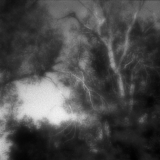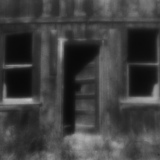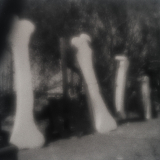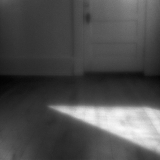

These images are all from the shrub-steppe region of Eastern Washington. This landscape, unlike the lush forests of the West side for which the Evergreen State was nicknamed, may seem bleak and indistinctive, as nothing but an amber blur that streaks by from the highway. But the shrub-steppe is a rich, multilayered landscape, and it has a magnetic pull for me.
I spent nearly every summer here as a kid, visiting my Finnish grandparents who had come to Tieton from northern Minnesota’s Iron Range, leaving behind a hardscrabble life in mining to farm thirteen acres of apples, the fruits of a better life.
During those years, vast tracts of shrub-steppe were cleared for cropland. No one thought of this once dominant landscape as a fragile ecosystem that had value in its natural state.
Today, the shrub-steppe is facing extinction. Only a small percentage of Washington’s historic shrub-steppe remains. The greatest loss is attributable to farmland development, reducing the vital habitat of many species that depend on the sagebrush environment.
I still go to Eastern Washington frequently. I go to find refuge in the arid silence, solace in the canyons, creeks, and rivers, flanked by folded hills that green up in spring like velvet cushions. I go because I love the scent of sage; the open plains and big, dramatic sky; the storied coulees of the Columbia Basin; the meadows of bunchgrasses, tiny wildflowers, and contorted anthropomorphic shrubs; the comical though noxious tumbleweeds; the Bighorn sheep, elk, cougars, coyotes and raptors who make their home there. I go to reconnect with this vanishing landscape.
Usually my photographic exploration of a landscape becomes more than the landscape itself. The images, seen metaphorically, reflect what is fundamental in my being. These images of the shrub-steppe are interwoven with thoughts of mortality, loss and renewal.

Places once active but no longer populated—ghost towns, abandoned buildings, empty structures, defunct playgrounds, and ancient sites—their ghostly ruins and what remains in various states of decay fascinate me.
However mundane and clichéd they are, I am completely taken with abandoned places. Old cemeteries, too. Entering an abandoned manufacturing plant, hospital, bunker, or old cemetery is like a journey into another world, a world defined by silence and absence. A reminder of the essential ephemerality of human existence. Yet, fragments of past lives persist in the structures. Whispers of untold stories charge the silence of the vacant space.
I love these contradictions and the creative tension they elicit. As liminal landscapes, ruins are suspended betwixt and between—between integrity and dissolution, substance and nothingness. It is this liminality that gives ruins their specific frisson.
Once abandoned, for whatever reason, the site is left to time and nature. Patterns of decay—rusted and mouldering forms, broken and weathered stone, peeling paint that reveals layers of history—are truly beautiful. But my lensless camera does not render such detail. Instead, my images explore the dark terrain of the haunting forms. They frame my inner landscape of ambiguous and contradictory emotions conjured by memory of the past and the sight of a world collapsed into rubble and decay, while simultaneously suggesting our own future in the absence.

Though my photographs mostly embody my deep affinity for the natural world, I’m also drawn to the enigmatic, odd, quirky, surreal in our human nature. These images frame that curiosity.
Pico Iyer, in his essay, Why We Travel, writes: “We travel to open our heart and eyes…. to shake up our complacencies…” Indeed, travel has always called me. Road trips in particular are my siren songs, especially if I’m driving the blue roads, routes that wind off-the-beaten-path. I love the sense of freedom, spontaneity, and adventure. It’s a way to break away from everyday life, those quotidian routines and expectations. Being in unfamiliar places unbuttons habits and preconceptions, and thus opens us to new experiences. And it’s exciting to wander, get lost, and along the way, discover something unexpected.


A Northwest photographer and poet, I want my landscape images to evoke a world beyond the literal, to immerse viewers in the glimmer of dream, memory, and metaphor. I want to convey the beauty and fragility of the natural world, a reminder of the ephemerality of our existence, that what we think of as fixed is but fleeting.
My work is heavily influenced by my training in the Zen arts, its characteristic simplicity, naturalness, imperfection, and quietness; and its practice which calls on
receptivity rather than a conceptual approach. It also draws on early 20th-century pictorial photographers whose painterly and poetic images made use of subtle tonal and tactile aspects and soft focus to evoke a dream-like mood to stimulate the imagination to see beyond the literal.
To accomplish my intentions, I keep my equipment minimal. I use a simple, non-lens optical device that softens the image, creates a tinge of ambiguity, and infuses forms with a glow I think of as a glint of the numinous. I love the mystery and beauty these lensless images convey visually.